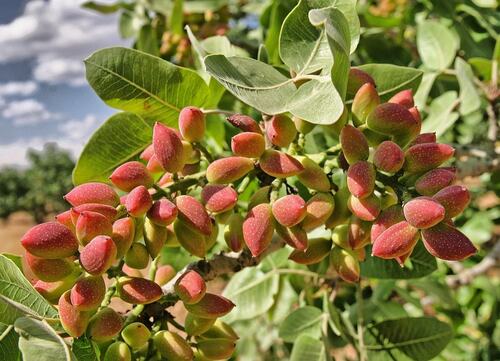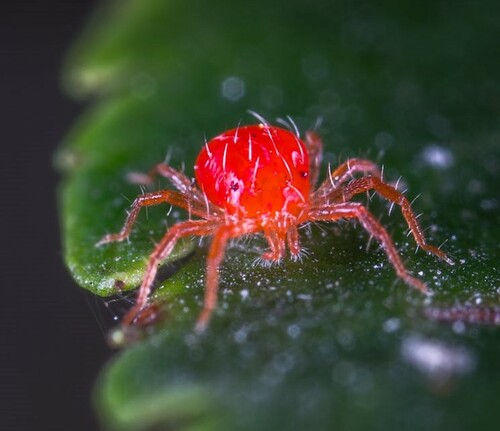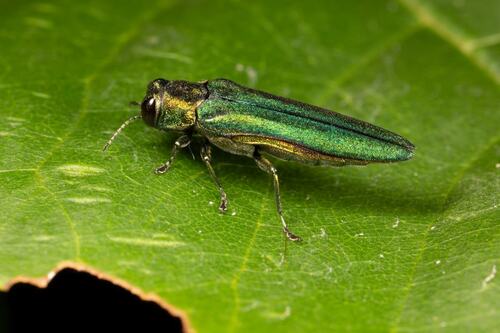On the Cutting Edge: The Latest News in Tree Science

Introduction
Every day, our collective understanding of trees improves. In addition to learning more about the behind-the-scenes world of trees, we learn new ways to battle pests and control the spread of invasive species.
Today, we wanted to share a few of the things scientists and researchers are working on and where their efforts are leading. Unfortunately, not all the news is good news—some of the lessons learned have illuminated even greater problems.
Bad News Bacteria

The Fruit of a Pistachio Tree - Photo by Erhan T from Pixabay
For the last few years, pistachio growers in California and Arizona have been experiencing problems with their trees. Instead of growing normally, many of their trees produce twisted root systems, which fail to anchor the trees adequately in high winds, and bushy, dense branches. Instead of growing tall and healthy, these trees remain gnarled, bushy shrubs.
The phenomenon, dubbed “pistachio bushy top syndrome," led farmers to reach out to researcher Jennifer Randall, with New Mexico State University, for help. After traveling to California and obtaining samples, Randall and her team identified two different Rhodococcus spp. bacteria infecting the afflicted trees. The bacteria normally affect ornamental plants, but in this case, they are wreaking havoc on an important crop.
Treatments have yet to be devised, but identifying the causal organism is an important first step. As it stands, farmers are forced to simply cull infected plants and replace them. However, the bacteria may be able to live in the soil for an extended period of time and infect new trees planted in old holes, so even this strategy may not work in the long term. Fortunately, one of Randall’s colleagues, Dr. Elizabeth Fichtner, is currently investigating this issue, which will be another important step in solving the problem.
Interconnected Immunity

Common Tree Pest: A Red Spider Mite - Photo by Egor Kamelev
Plants and trees have various defensive mechanisms that help them cope with different types of pathogens, pests, and environmental stresses. These defense mechanisms were largely thought to be relatively independent processes. However, work performed by the University of Montreal’s Dr. Frederic E. Pitre has shown that plant defenses may be much more intertwined than previously thought.
While researching fungal and bacterial RNA sampled from trees, Pitre found genetic material from a common spider mite pest on many of the trees. The presence of RNA indicated that the trees were currently or previously attacked by the mite. However, some of the trees—namely, those that had already been exposed to chemical pollutants—lacked such genetic clues, meaning that the mite had not successfully colonized them.
This seems to suggest, according to Pitre in an interview with Eureka Alert, that “…tolerating contamination might ‘prime’ the trees’ defense machinery, allowing them to defend themselves better against pests."
While Pitre’s initial experiments were carried out in a relatively sterile lab environment, he and his colleagues are currently replicating their tests on trees growing in natural conditions. While these findings have not yet led to the development of new technologies or practices, better understanding the processes by which trees repel attackers is sure to advance the human understanding of trees, which will pay dividends in the future.
"Ash-tonishing" Replicas

The Emerald Ash Borer Beetle - A Devastating Tree Pest
The emerald ash borer (Agrilus planipennis) has been killing ash trees in the United States since the 1990s. Hailing from Asia, the insect is not a problem in its native lands, as the local trees have developed defenses against the insect and predators keep the shiny green bug’s population in check. In fact, the insects had not been studied very extensively prior to their introduction to the United States, as they just were not a terribly important species from a human standpoint.
But we all know that this has changed, and the insects are spreading across the United States, leaving suburbs and forests devoid of ash trees (Fraxinus spp.) which are very commercially important. Scientists have experimented with several different strategies for eradicating the insects, but few have shown much promise. However, a multidisciplinary team from Pennsylvania State University may have devised a useful tool to battle the invasive beasts.
One of the primary approaches researchers have taken is to attempt to lure males into traps. By doing so, the scientists can reduce the population, as fewer males are around to fertilize females. The hard part has been devising a decoy that looks realistic enough to the males to get them to enter the trap.
Plastic green decoys work from a distance, but once the males get up close, they realize the decoys are not real and go on their way. Fortunately, the team from Penn State has devised a completely different method for producing the decoys. Their new method is able to recreate the fine structure of the female’s forewings, which is what the males cue in on in the first place.
These new models are unlikely to be a silver bullet for eradicating the emerald ash borer, but they may help protect areas that are not currently battling an infestation.
Conclusion

A Person Holds a Tree Seed Pod - Photo by Anh Nguyen
It's clear that our ongoing journey into tree research holds promising insights not only for the health of our trees but also for our broader ecological systems. The studies highlighted, from battling pests to enhancing tree immunity, underscore the critical importance of integrating scientific research with practical arboriculture. By staying informed and supportive of such advancements, we contribute to a future where both our urban and rural landscapes can thrive. Let's continue to push the boundaries of what we understand about the natural world around us, ensuring a greener tomorrow.
Contact Arborist Now for help in dealing with any tree pests, diseases, or other concerns. We make sure that our certified arborists are up to date on the latest in tree science and knowledge.





